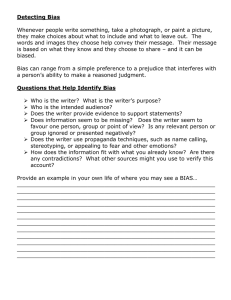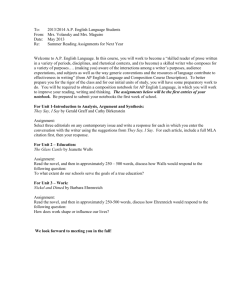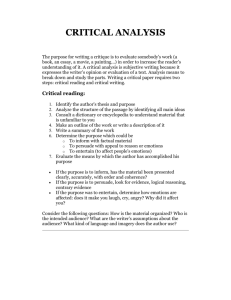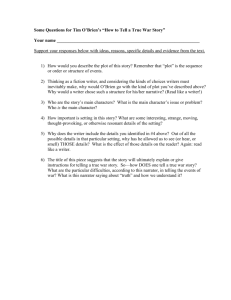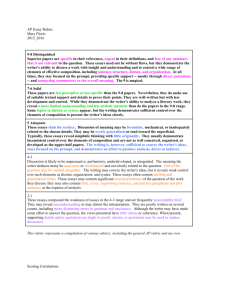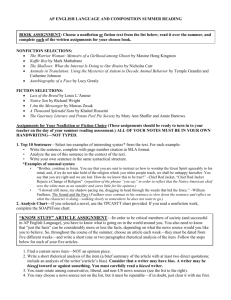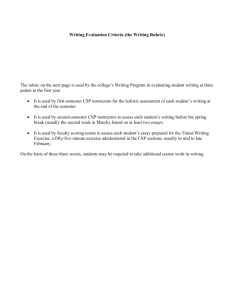Understanding Bias: Analysis & Examples
advertisement
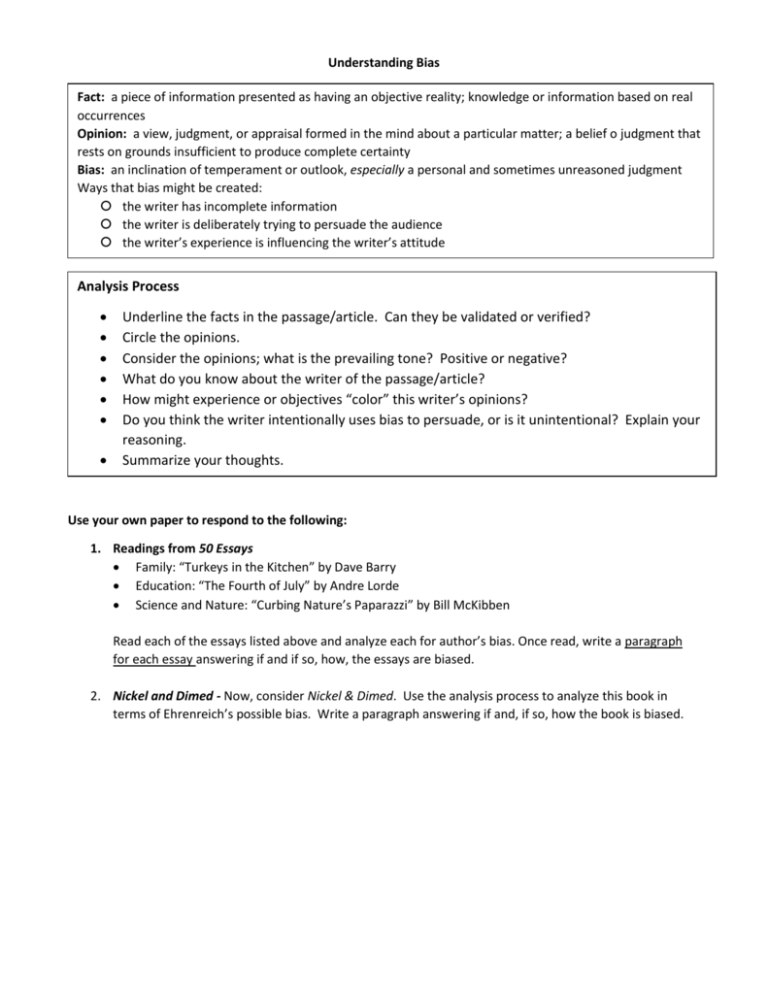
Understanding Bias Fact: a piece of information presented as having an objective reality; knowledge or information based on real occurrences Opinion: a view, judgment, or appraisal formed in the mind about a particular matter; a belief o judgment that rests on grounds insufficient to produce complete certainty Bias: an inclination of temperament or outlook, especially a personal and sometimes unreasoned judgment Ways that bias might be created: the writer has incomplete information the writer is deliberately trying to persuade the audience the writer’s experience is influencing the writer’s attitude Analysis Process Underline the facts in the passage/article. Can they be validated or verified? Circle the opinions. Consider the opinions; what is the prevailing tone? Positive or negative? What do you know about the writer of the passage/article? How might experience or objectives “color” this writer’s opinions? Do you think the writer intentionally uses bias to persuade, or is it unintentional? Explain your reasoning. Summarize your thoughts. Use your own paper to respond to the following: 1. Readings from 50 Essays Family: “Turkeys in the Kitchen” by Dave Barry Education: “The Fourth of July” by Andre Lorde Science and Nature: “Curbing Nature’s Paparazzi” by Bill McKibben Read each of the essays listed above and analyze each for author’s bias. Once read, write a paragraph for each essay answering if and if so, how, the essays are biased. 2. Nickel and Dimed - Now, consider Nickel & Dimed. Use the analysis process to analyze this book in terms of Ehrenreich’s possible bias. Write a paragraph answering if and, if so, how the book is biased.
